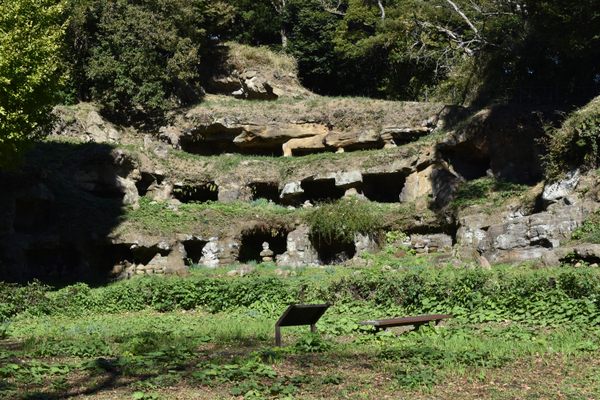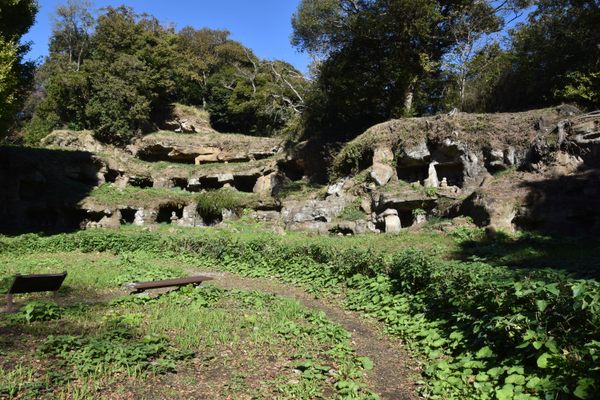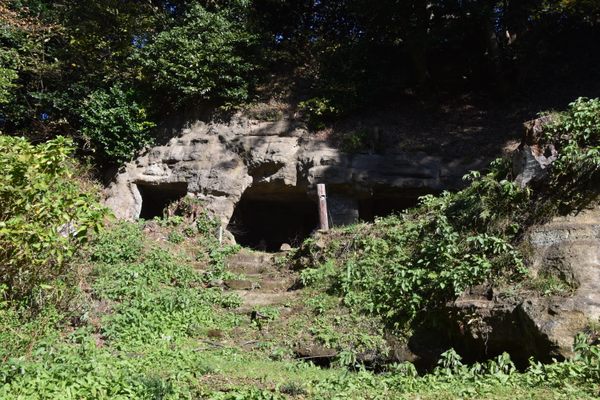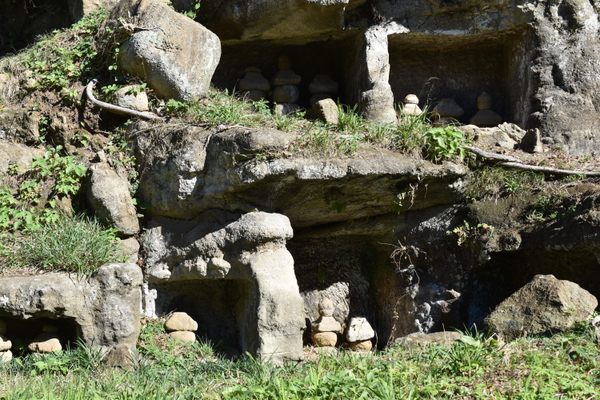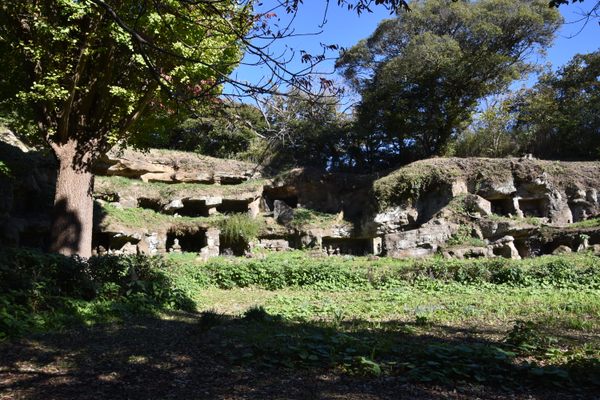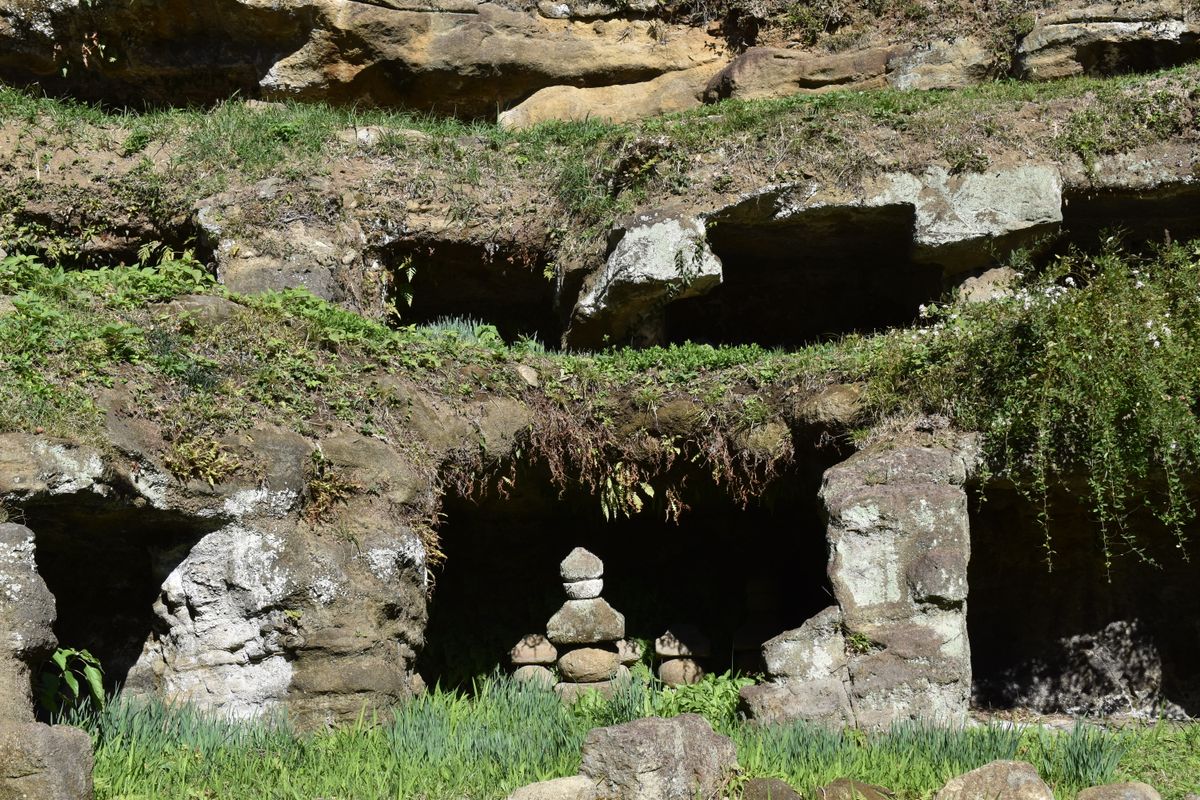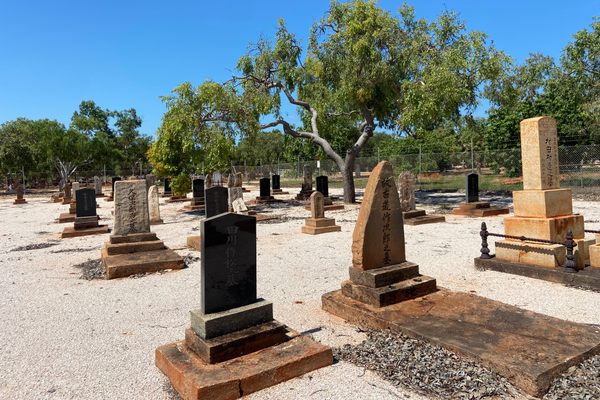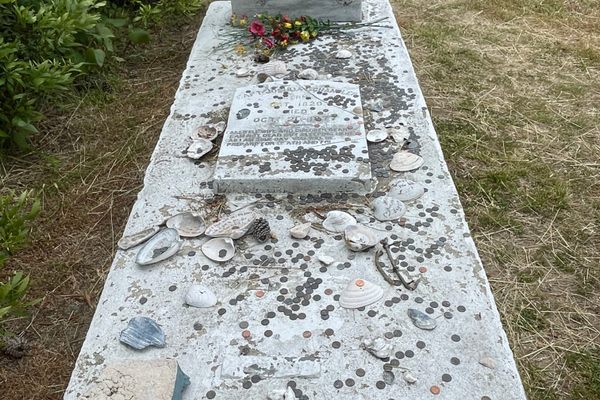About
Kamakura, the medieval capital of Japan, is set in a “natural citadel” facing the sea and surrounded by wooded hills in all other directions. As there are sandstone cliffs everywhere, it developed a unique style of tomb called the yagura, an artificial grotto where the ashes of the deceased are buried, alongside Buddhist effigies and funerary pagodas.
Approximately 3,000 such burial caves are known today, both big and small, and several “yagura clusters” can be found all across the city. The Mandarado site in Zushi, historically part of Kamakura, is an impressively well-preserved cluster of around 150 burial grottoes, only open to the public on select days throughout the year.
Located smack in the middle of the Nagoe Pass, an historic mountain pass counted as one of Kamakura’s seven entrances, the site is almost hidden among the thicketed cliffs and usually fenced off as archaeological surveys and excavations are still unfinished. Dating from the late 13th to the late 15th centuries, the tombs are believed to belong to the upper class of the period, such as the samurai and the Buddhist clergy.
Because of its nature, location, and overall eerie atmosphere, the site is often rumored to be haunted, presumably by the spirits of fallen warriors. Its name is also shrouded in mystery, as the Mandarado or “mandala pavilion” was almost certainly a Buddhist temple and first recorded in 1594 as a farming estate, quite possibly lost by that time and otherwise unknown today.
Related Tags
Know Before You Go
The site is usually closed. It is only open on Mondays, Saturdays, Sundays and holidays in late spring (April-June) and early winter (October-December) seasons. Admission is free but donations are much appreciated.
Note that the site is situated in the middle of a mountainous area, so it will require a bit of hiking in the woods to get there, about 40 minutes on foot from Kamakura or Zushi; buses also go to the entrances of the Nagoe Pass from either station.
Hidden Japan: Sado Island, Nara & Kyoto
Explore a different side of Japan.
Book NowPublished
December 8, 2023
